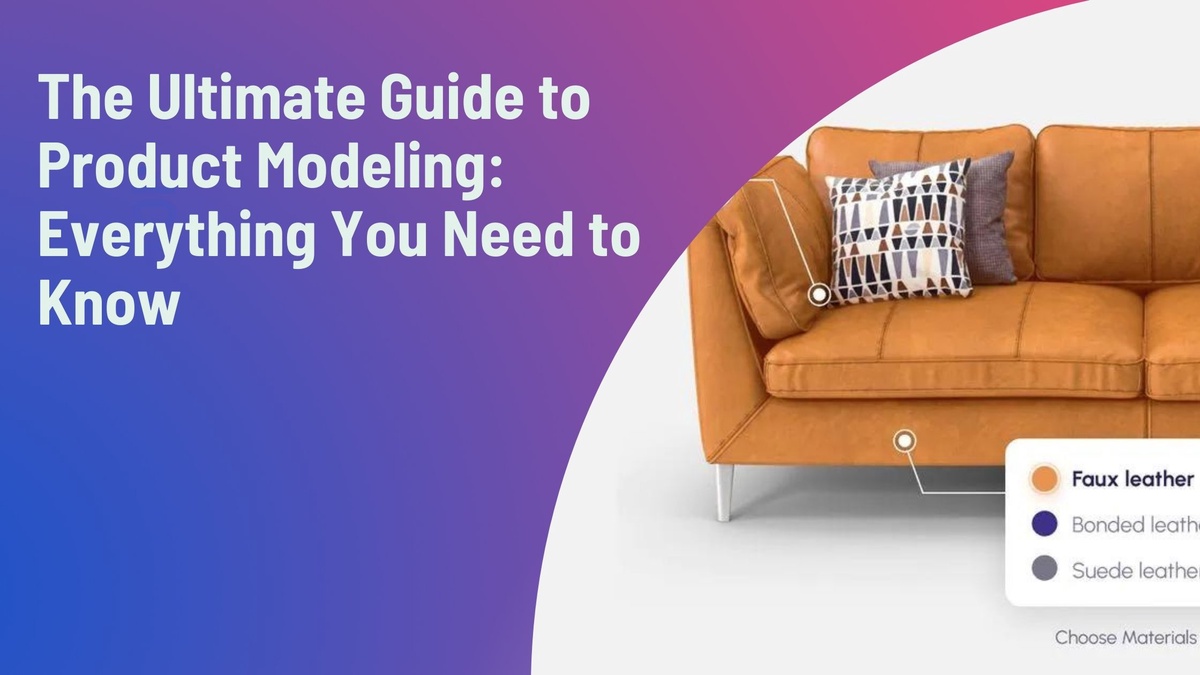In today's highly competitive market, businesses are constantly seeking ways to enhance their products and captivate consumers' attention. One such method gaining popularity is product modeling, particularly in the realm of 3D. From showcasing product prototypes to creating lifelike visualizations, 3D product modeling services offer a myriad of benefits for businesses across various industries. In this comprehensive guide, we'll delve into everything you need to know about product modeling in the realm of 3D.
What is 3D Product Modeling?
3D product modeling is the process of creating digital representations of physical objects using specialized software and techniques. These digital models are detailed, accurate, and can be manipulated in a virtual environment. Unlike traditional photography or 2D illustrations, 3D modeling allows for greater flexibility, realism, and customization, making it an invaluable tool for product development, marketing, and visualization.
The Benefits of 3D Product Modeling Services
- Enhanced Visualization:
3D product modeling provides a realistic representation of products, allowing consumers to visualize them from multiple angles and perspectives. This immersive experience helps in better understanding product features, dimensions, and functionalities, ultimately influencing purchasing decisions.
- Cost-Effective Prototyping:
With 3D modeling, businesses can create virtual prototypes of products without the need for physical prototypes. This significantly reduces costs associated with traditional prototyping methods while accelerating the product development cycle.
- Customization and Personalization:
3D modeling enables customization and personalization of products to meet individual preferences and requirements. Businesses can showcase various product variants, colors, and configurations, catering to diverse customer needs and preferences.
- Marketing and Advertising:
High-quality 3D product renders can be used in marketing materials, advertisements, and promotional campaigns to create visually compelling content. These renders help in showcasing products in the best possible light, attracting attention, and driving engagement.
- Streamlined Production Processes:
By creating digital models of products, businesses can streamline production processes, optimize manufacturing workflows, and identify potential design flaws or issues early in the development stage. This leads to improved efficiency, reduced waste, and faster time-to-market.
The Process of 3D Product Modeling
- Requirement Gathering:
The first step involves understanding the client's requirements, product specifications, and desired outcomes. Clear communication and collaboration are essential to ensure alignment and avoid misunderstandings.
- Conceptualization and Design:
Based on the gathered requirements, skilled 3D artists conceptualize and design the product using specialized software tools. This stage involves creating a detailed digital model that accurately represents the physical product.
- Texturing and Materials:
Once the basic model is created, textures, materials, and surface finishes are applied to enhance realism and visual appeal. This step involves adding colors, textures, and reflective properties to simulate real-world materials.
- Lighting and Rendering:
Lighting plays a crucial role in creating realistic 3D renders. Proper lighting techniques are used to illuminate the scene, highlight key features, and create shadows for depth and dimension. Rendering software is then used to generate high-quality images or animations of the product model.
- Quality Assurance and Revisions:
Before final delivery, the 3D model undergoes thorough quality assurance checks to ensure accuracy, consistency, and adherence to client specifications. Any necessary revisions or adjustments are made based on client feedback.
- Final Delivery:
Upon approval, the finalized 3D product model is delivered to the client in the desired format, ready for use in various applications such as e-commerce websites, digital catalogs, presentations, and more.
Conclusion
In today's digital age, 3D product modeling services offer a powerful tool for businesses to showcase their products effectively, streamline production processes, and drive sales. By leveraging the benefits of 3D modeling, businesses can create stunning visualizations, engage consumers, and stay ahead of the competition. Whether it's for product development, marketing, or visualization purposes, investing in 3D product modeling can yield significant returns and enhance brand visibility in the marketplace.


No comments yet